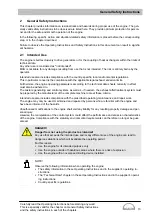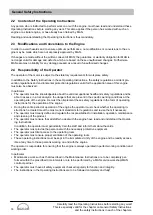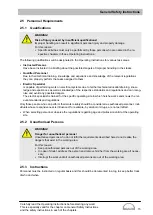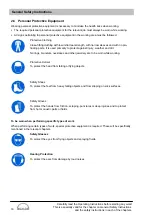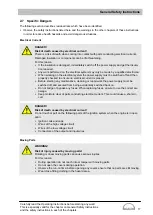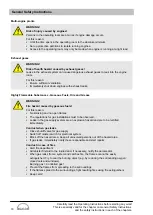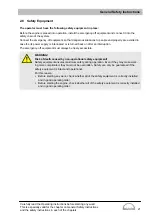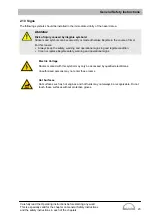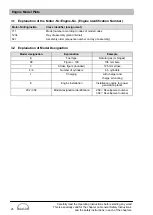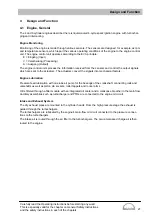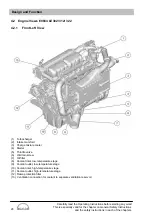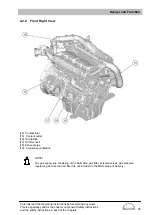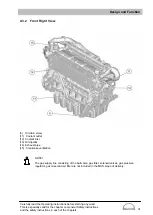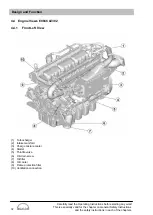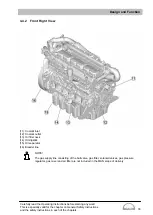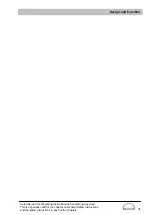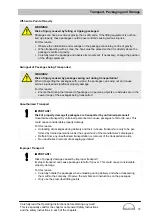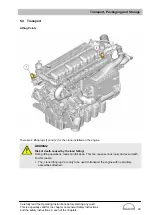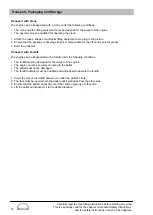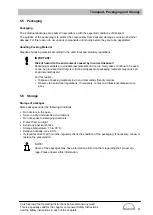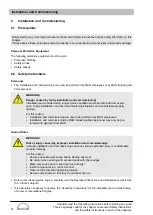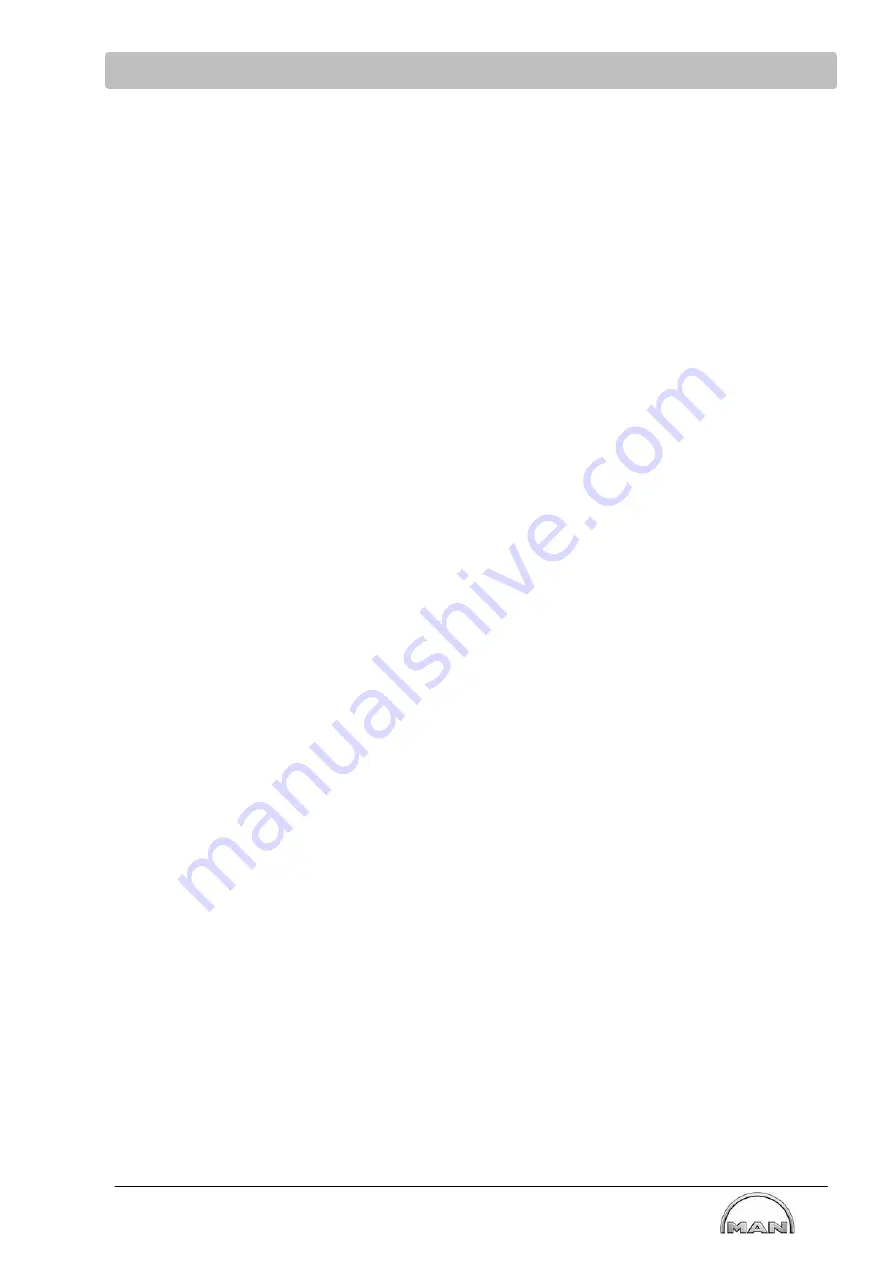
Design and Function
27
Carefully read the Operating Instructions before starting any work!
This is especially valid for the chapter on General Safety Instructions
and the safety instructions in each of the chapters.
4
Design and Function
4.1
Engine, General
The 4 and 6 cylinder engines described here is liquid-cooled 4-cycle spark ignition engine with turbochar
ging and intercooling.
Engine Monitoring
Monitoring of the engine is made through various sensors. The sensors are designed, for example, as rpm
and temperature sensors, which report the various operating conditions of the engine to the engine control
unit. The engine control unit operates according to the EVA principle:
E = Eingang (Input)
V = Verarbeitung (Processing)
A = Ausgang (Output)
The engine control units process the information received from the sensors and control the output signals
which are sent to the actuators. The actuators convert the signals into mechanical factors.
Engine Lubrication
Pressure feed lubrication with one lube-oil pump for the bearings of the crankshaft, connecting rods and
camshafts as well as piston pin sockets, roller tappets and rocker arms.
Oil is filtered through a filter module with an integrated oil cooler and a crankcase breather in the main flow.
Ancillary assemblies such as turbocharger and PTOs are connected to the engine oil circuit.
Intake and Exhaust System
The dry exhaust pipes are mounted to the cylinder heads. From the high-pressure stage the exhaust is
guided through the turbochargers.
The turbochargers are lubricated by the engine's main-flow oil circuit connected to the pressure connec
tions onthe turbochargers.
The intake air is routed through the air filter to the turbochargers. The pre-compressed charge air isthen
routed to the engine.

